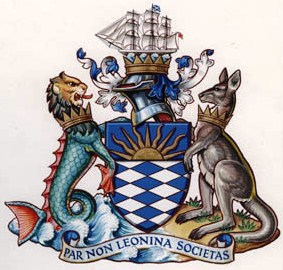


A work in progress - october 2016
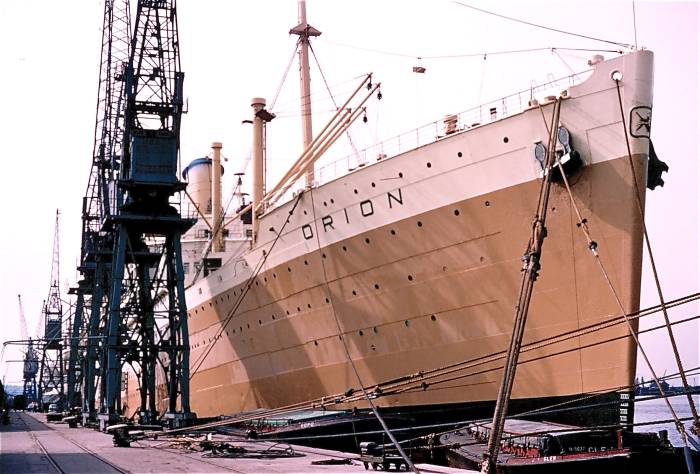
Orion at Tilbury
Ship Notes: Orient Line's 23,371-ton Orion, built by Vickers-Armstrong at Barrow and launched by radio, was always regarded as a landmark in British shipbuilding. Until she was launched in 1934, passenger liners were invariably given a psuedo-Victorian interior style but Orion stood apart.
She had a wide range of public rooms, there was only one funnel and one mast while she was also the first British liner to be fitted with an air conditioning plant.
The Duke of Gloucester launched the liner by a radio link from Brisbane, Australia. The signal activated the launching mechanism which allowed the liner to slide into the water. Overall, Orion was 665ft long with a beam of 82ft and could accommodate 486 passengers in first class and 653 in tourist class. During her time Orion made many visits to Southampton, steamed more than two million miles and carried about 500,000 passengers.
She was finally taken out of service in 1963.
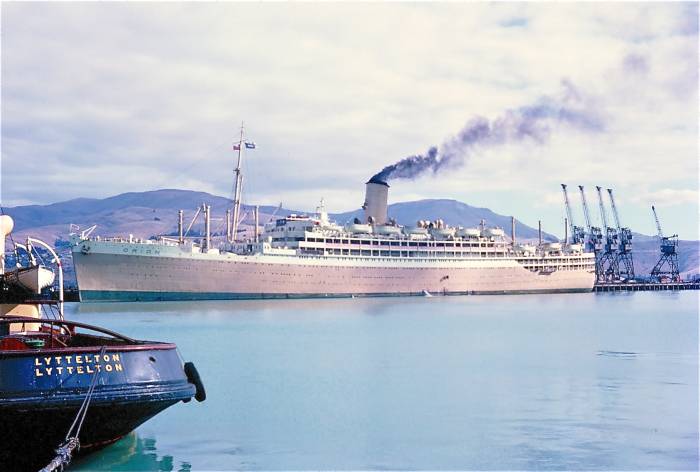
Orion in New Zealand
Orion was arguably one of the most
famous of the Australian immigrant ships. Originally built for the Orient Line
and later owned by P&O, she was designed specifically for the immigration
service and was the first British ocean liner to feature air conditioned public
rooms.
Many of her design features would be incorporated into later ships, and as such
was a test bed for these concepts. She was a naval architect's ship in a different way
to others, in that an architect was commissioned to design and carry out the
entire decoration of the ship.
Brian O'Rorke, a New Zealander, was that architect and his extensive use of chromium and Bakelite throughout, because of its resistance to the effects of sea air was a first. This style of decor was very original for the time and was copied extensively on later liners.
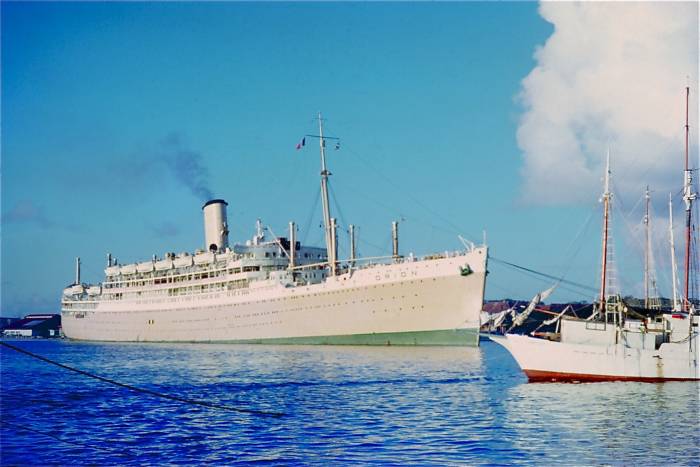
Orion in Tahiti
She commenced service for Orient Line in 1935 and was at the time their largest
liner.
RMS Orion was launched in 1934 at Barrow-in-Furness, Lancashire at the Vickers
Armstrong Yard using a rather unusual technique. She was launched using remote
control via wireless. The Duke of Gloucester who was in Brisbane, Australia at
the time, officiated and pulled the switch or pressed the button which
transmitted signals around the globe to ultimately activate the launch process.
The procedure had been used once before during 1934 by the Dutch to launch one
of the Holland-Africa liners.
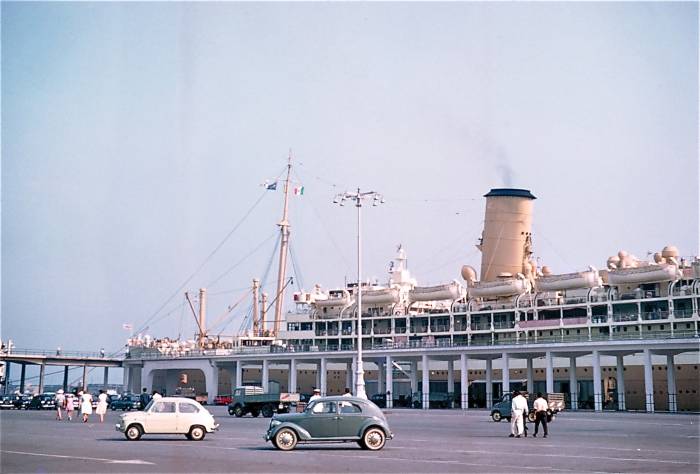
Orion at Naples
Orion was an enlarged version of Orontes, and the first single funnelled ship to
be built for Orient Line since 1902. She also had only one mast, making her very
different from her predecessors in the fleet. She was the first British ship to
be fitted with air-conditioning, though this was confined to the dining rooms in
her original configuration. She was a twin screw vessel, powered by geared
turbines and had a service speed of 20 knots. Her accomodation was originally
designed for 486 in first class and 653 in tourist class, with a crew of 466. On
cruise work she accommodated 600 passengers in a one class environment.
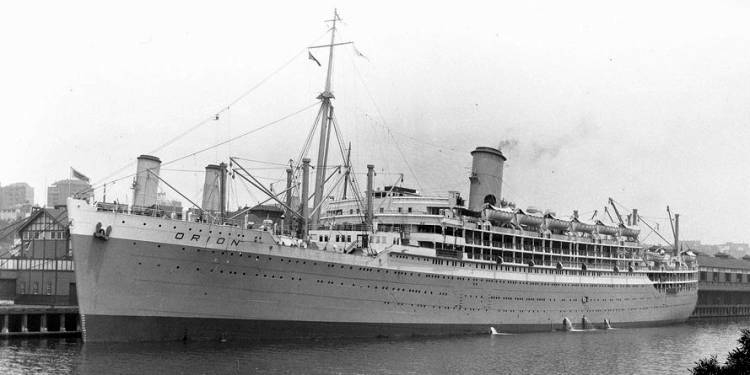
Orion at Woolloomolloo, NSW
When she was delivered to P&O in August 1935 she made a series of cruises from
Tilbury docks London, the first of which was to Norway. On September 29 that
year she departed Tilbury on her maiden voyage to Australia, and from all
accounts she was well received. A problem with soot deposits (smut) on the aft
decks was noticed during this voyage and a modification to her funnel, by
increasing its height corrected this.
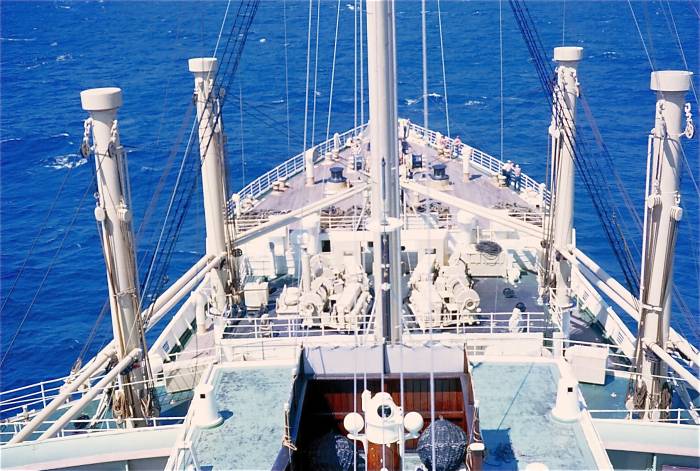
Orion - view from the 'monkey
island'.
Orion alternated main line voyages to Australia with cruises until war broke out
in 1939, when she was acquired by the British government to work as a troop
carrier. Her first voyage for the troops was to Egypt and then it was off to
Wellington, New Zealand to board troops to take to Europe. She left Wellington
on January 6, 1940 and joined with other ships in convoy for Sydney Australia,
to rendezvous with her sister ship Orcades. The convoy then left Australia to
disembark their troops in Egypt.
Her career during the war was not without incident or accident. On 15 September
1941, in a convoy carrying troops to Singapore, she was following the battleship
HMS Revenge in the South Atlantic when the steering gear on the warship
malfunctioned. Orion rammed Revenge and the impact caused severe damage to
Orions bow. She continued to Capetown where temporary repairs were made and then
continued to Singapore where more permanent repairs were completed.
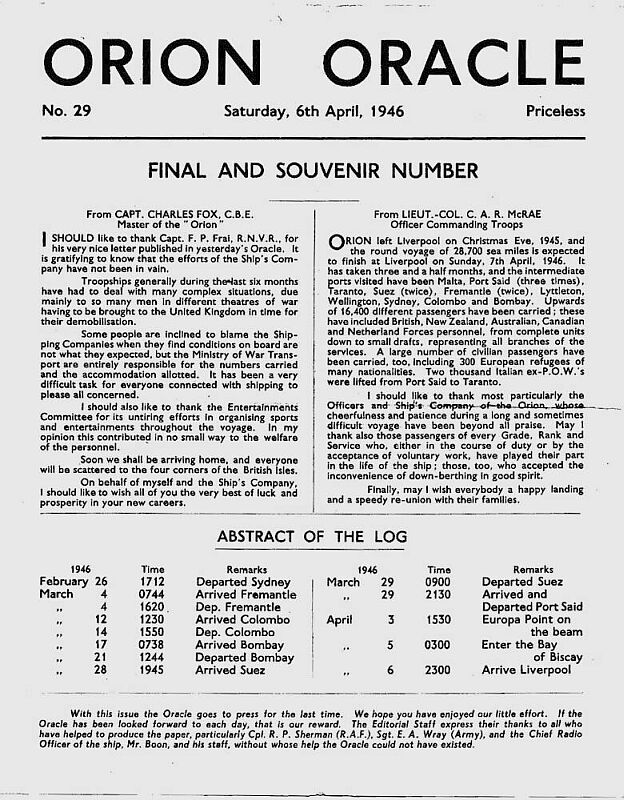
It was about this time that the Japanese were closing in on Singapore and so Orion was again enlisted, but this time it was to evacuate civilians to the safety of Australia. She remained an essential troop carrier during the war years doing all that was required of her. In October 1942 she was one of many acquired liners which participated in 'Operation Torch' and made two trips to North Africa carrying over 5000 troops each time. In 1943 her troop carrying capacity was increased to 7000 which, along with other vessels such as USS West Point (SS America) played a huge role in the positioning of the Western Allied Forces. Her role as a troop carrier tapered off in the Pacific theater but she still ferried troops around at 5000 a time. By the time she was released from British Government control Orion had carried over 175,000 war personnel and had steamed over 380,000 miles.
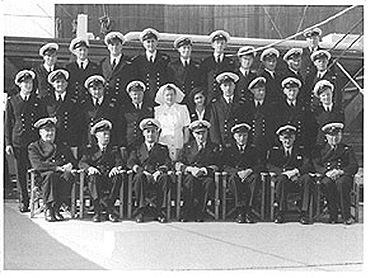
Orion's officers c####
The war weary Orion was returned to her makers yard at Barrow on the first of
May 1946 to begin a post war refit to a life as intentioned, as a passenger
ship. The refit took almost a year, but included a redesign of passenger
accomodation such that now there were 546 first class and 706 tourist class. She
made her first post war commercial sailing from Tilbury on 25 December 1947 the
first of the P&O Orient liners to do so to Australia. Her duties hence, included
three cruises to the West coast of the USA including San Francisco, and main
line services from Europe to Australia. In 1958 she was converted to carry 342
in cabin class and 722 in tourist class on an independant schedule. From 1961
she became a one class ship and carried a maximum of 1691 passengers, though the
demand for passage by ship to Australia was declining and ultimately she was
retired from P&O in 1963.
On the 28th February 1963 Orion left Tilbury, her home base, on her final
voyage. Under her own steam she set sail for Australia stopping at Piraeus in
Greece via Suez for Sydney. She left Sydney for the final time on April 8, via
Melbourne three days later and Fremantle on the 15 April. She was reported to be
flying an 85 foot paying-off pennant from her mast as she left Australia. Orion
arrived back at Tilbury on May 15 1963 to face her fate.
She was chartered by Firma Otta Friedrich Behnke for services as a floating
hotel for the duration of the International Horticultural Exhibition. Orion
arrived in Hamburg on 23 May 1963 and was berthed at the Overseas Landing Stage
where she had a maximum of 1150 guest capacity. The exhibition ended on 30
September and on the 1st of October she left Hamburg for Antwerp, Belgium where
she would be broken down for scrap by Jos Boel et Fils.